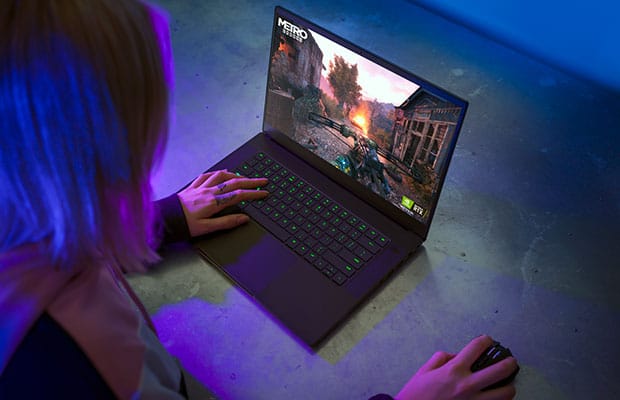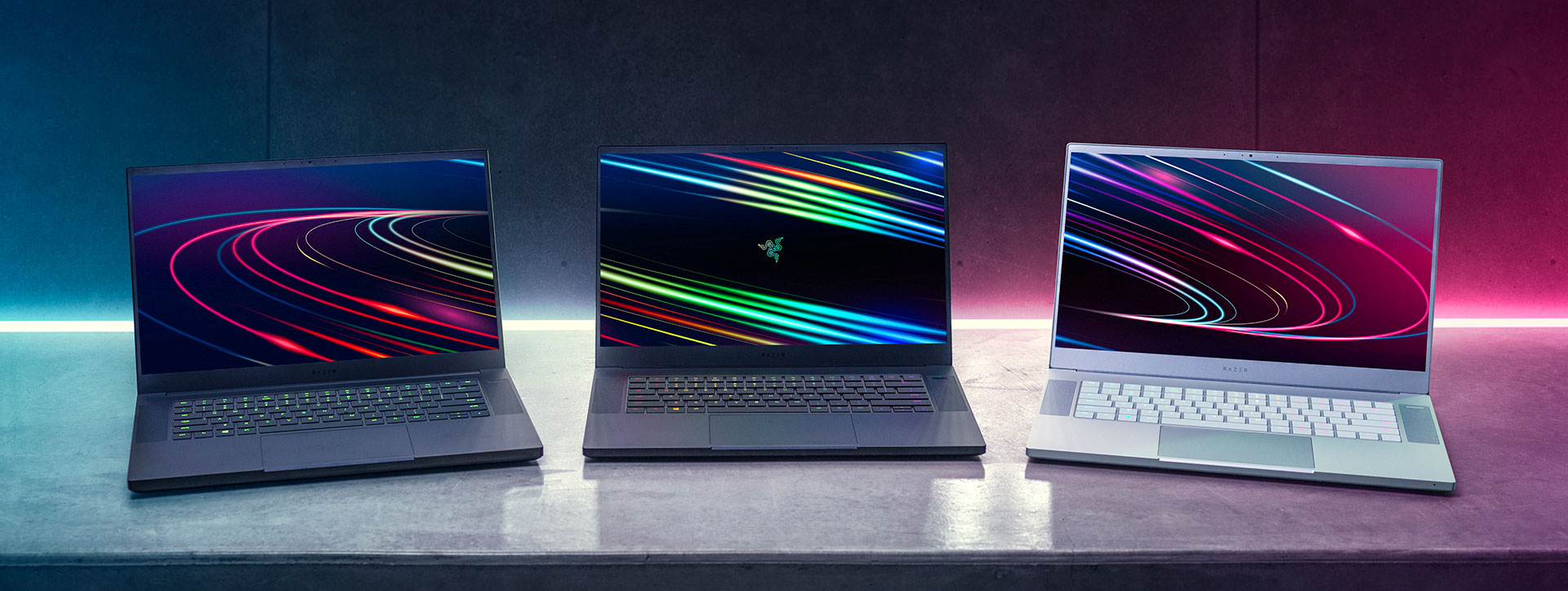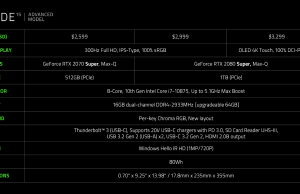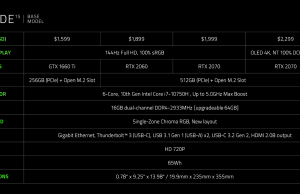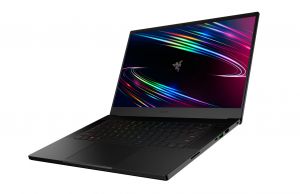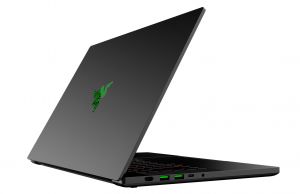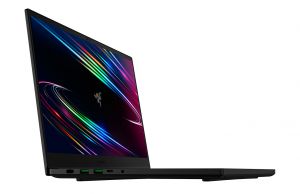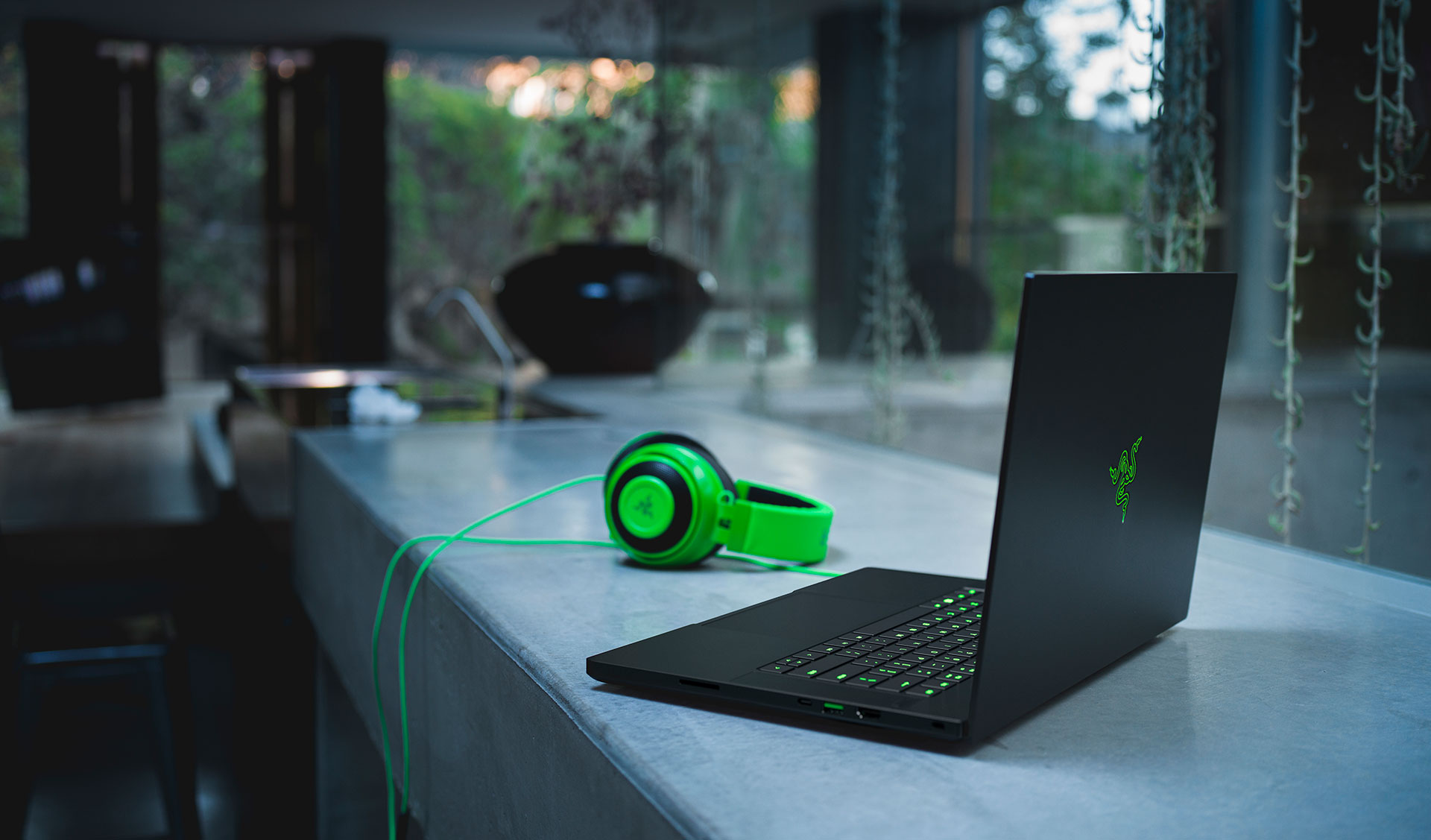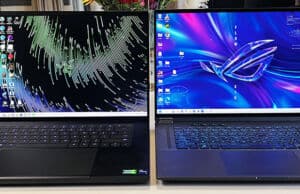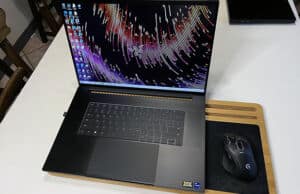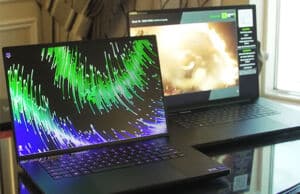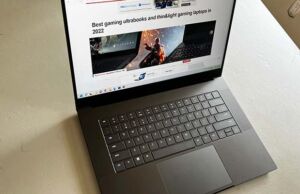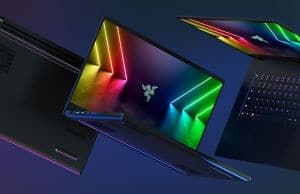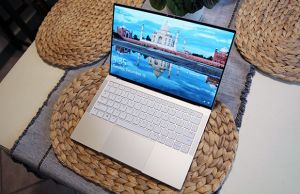Along with the release of Intel’s 10th Gen laptop CPUs, Razer has updated their Razer Blade 15 options. It’s not just a CPU upgrade either – Razer has made some significant improvements on their premium ultraportable that I’m confident everyone will like.
First let’s start off with the Blade 15 Base model, which got a screen bump to 144Hz at FHD resolution. This is likely the same screen they used on their Advanced models last year, and is a great screen. The Base variant will also get three options for a GPU: GTX 1660 Ti, RTX 2060 Max-Q and RTX 2070 Max-Q. All these options will be paired with the hexacore Intel Core i7-10750H.
Prices for the Razer Blade 15 Base 2020 start at $1599, while the Advanced starts at $2599, with availability scheduled for May 2020. Preorders begin May 15th.
The Advanced model comes with an octa-core i7-10875H CPU and will be paired either with Nvidia’s new RTX 2070 Super Max-Q or the RTX 2080 Super Max-Q. These models come standard with an all-new 300Hz screen.
Update: My detailed review of the 2020 Razer Blade 15 Advanced is available here, and my full review of the 2021 generation is available over here.
If a FHD screen isn’t to your liking, either model can be outfitted with an OLED 4k screen, which is 60Hz and is calibrated to 100% DCI-P3 standards. The Advanced model is touch-enabled, keep in mind.
| 2020 Razer Blade 15 Base | 2020 Razer Blade 15 Advanced – review | 2019 Razer Blade 15 Advanced – review | |
| Screen | 15.6 inch, 144Hz Full HD IPS, 100% sRGB, matte, factory calibrated
15.6 inch, 60Hz UHD OLED, 100% DCI-P3, 1ms response, glossy, non-touch, factory calibrated |
15.6 inch, 300Hz Full HD IPS, 100% sRGB, matte, factory calibrated
15.6 inch, 60Hz UHD OLED, 100% DCI-P3, 1ms response, glossy, touch, factory calibrated |
15.6 inch, 1920 x 1080 px, IPS FHD, 144/240 Hz, matte |
| Processor | Intel 10th Gen Comet Lake i7-10750H CPU, hexa-core 2.6 GHz (5.0 GHz boost) | Intel 10th Gen Comet Lake i7-10875H CPU, octa-core 2.3 GHz (5.1 GHz boost) | Intel 9th Gen Coffee Lake i7-9750H CPU, hexa-core 2.2 GHz (4.1 GHz boost) |
| Video | Intel UHD + up to RTX 2070 Max-Q, with Optimus | Intel UHD + Nvidia RTX 2070 Super Max-Q or RTX 2080 Super Max-Q, with Optimus | Intel UHD + up to RTX 2080 Max-Q, with Optimus |
| Memory | up to 64 GB DDR4 2933 Mhz (2× DIMMs) | up to 64 GB DDR4 2933 Mhz (2× DIMMs) | up to 32 GB DDR4 2666 Mhz (2× DIMMs) |
| Storage | two M.2 NVMe SSDs, up to 4 TB | single M.2 NVMe SSD | single M.2 NVMe SSD |
| Connectivity | Intel Wireless 6 AX, Bluetooth 5.0 | Intel Wireless 6 AX, Bluetooth 5.0 | Intel Wireless AC 9560, Bluetooth 5.0 |
| Ports | 2x USB-A 3.1 gen1, 1x USB-C with Thunderbolt 3, HDMI 2.0, Ethernet, 1x USB-C 3.2 gen2, mic/earphone | 2x USB-A 3.1 gen2, 1x USB-C with Thunderbolt 3, 1x USB-C 3.2 gen2, HDMI 2.0, mic/earphone, UHS-III SD card-reader | 3x USB-A 3.1 gen2, 1x USB-C with Thunderbolt 3, HDMI 2.0, mini-DP, mic/earphone, Kensington Lock |
| Battery | 65 Wh, 230 W charger | 80 Wh, 230 W charger | 80 Wh, 230 W charger |
| Size | 355 mm or 13.98” (w) x 235 mm or 9.25” (d) x 19.9 mm or .78” (h) | 355 mm or 13.98” (w) x 235 mm or 9.25” (d) x 17.8 mm or .70” (h) | 355 mm or 13.98” (w) x 235 mm or 9.25” (d) x 17.8 mm or .70” (h) |
| Weight | 2.1 kg (4.63 lbs) | 2.1 kg (4.63 lbs) | 2.1 kg (4.63 lbs) |
| Extras | single-zone RGB keyboard, large clickpad, HD webcam, stereo front speakers | redesigned individually lit RGB keyboard, large clickpad, HD Windows Hello webcam, stereo front speakers | individually lit RGB keyboard, large clickpad, HD Windows Hello webcam, stereo front speakers |
Now onto the good stuff.
If you’ve read my previous reviews, you’d know that I was pretty critical of the keyboard layout. Particularly the up arrow being between the Shift key and the ? key. I’m happy to say that this has been fixed in these new models, with the up and down arrows being split and the shift key being bigger as a result. On top of that, Razer has opted to not use their new optical key technology since they couldn’t fit it into the new arrow keys. Frankly, I’m a little glad about this since adding that feature removed the backlighting on the Fn keys on the F row.
Another great feature Razer finally added is an SD card slot. For years, creators have been asking for this and now they finally get it. On the Advanced model only of course. :)
There are several other differences in the Base and Advanced models, most of them favoring the Advanced model. The Advanced model gets per-key lighting, Windows Hello and an 80Whr battery. The Base model has single-zone key backlighting, a standard webcam and only a 65Whr battery, and it’s also somewhat thicker. Oddly, the Base model also gets Ethernet, but the Advanced model doesn’t.
Probably one of the best new features the Advanced model gets over the Base model is the ability for USB-C charging. The Advanced model has two USB-C ports (one on each side) and they both support 20V USB-C charging with PD 3.0. This is huge because it’ll allow you to use up to a 100W charger to keep your laptop charged in the event you forget your much larger 230W power brick (or you’d rather not bring it along).
This is an interesting year for Razer as the CPU and GPU enhancements are less exciting than the rest of the features they have to offer. It’s not their fault – I just don’t think the Super GPU models are going to be enough on an improvement to get me to upgrade my early 2019 model I’ve been using since it launched. But USB-C charging, the SD card slot, the 300Hz screen, and the fixed keyboard layout are all things I find very useful and might convince me, provided I can find someone to buy my current laptop.
Regardless of whether I’ll upgrade, I’ll be getting a Blade 15 review unit at some point and will be happy to put it through the paces. If it’s anything like their last couple models, I’m sure it’ll be great.

